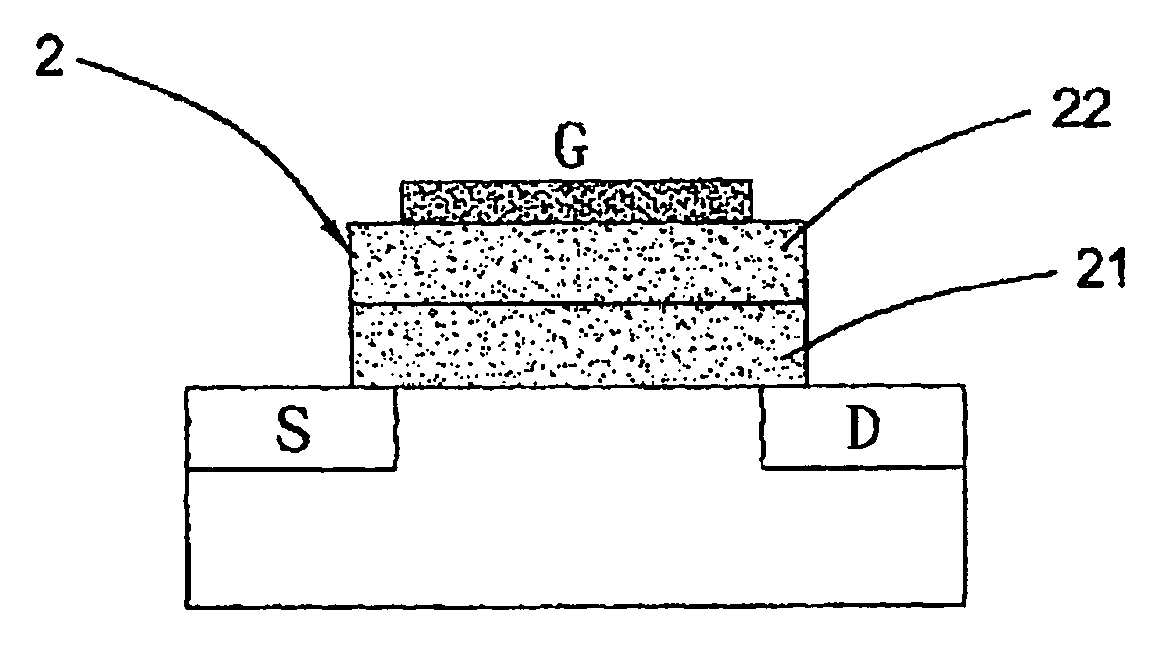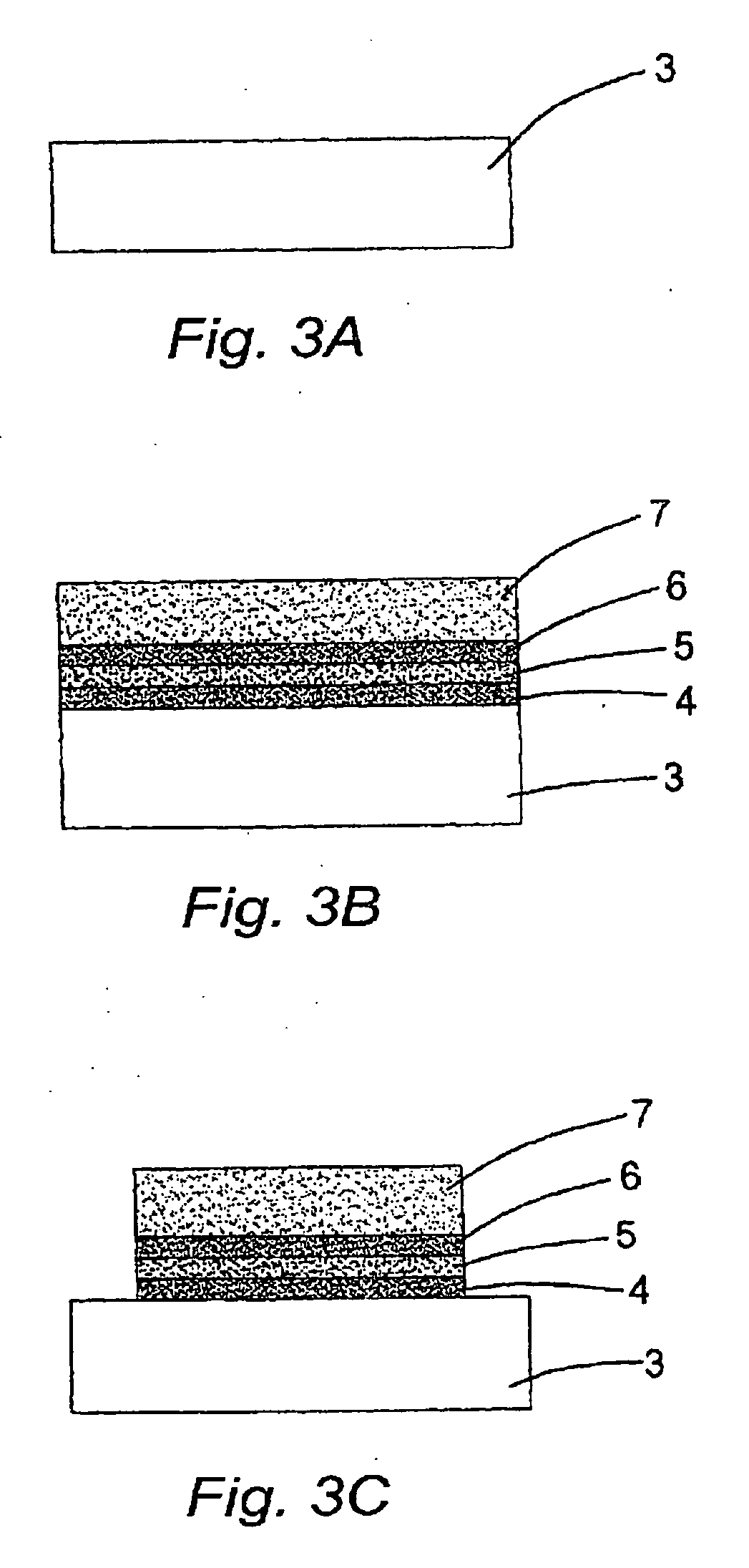Process for fabricating non-volatile memory by tilt-angle ion implantation
- Summary
- Abstract
- Description
- Claims
- Application Information
AI Technical Summary
Benefits of technology
Problems solved by technology
Method used
Image
Examples
Embodiment Construction
[0018] Referring to FIGS. 3A-3F, a process for fabricating non-volatile memory by tilt-angle ion implantation according to the invention comprises the steps of:
[0019] step 1: providing a wafer substrate 3 (FIG. 3A);
[0020] step 2: depositing over the wafer substrate 3 successively a first oxide layer 4, nitride layer 5, an upper second oxide layer 6, and a gate 7, in a manner that a gate dielectric layer (oxide-nitride-oxide (ONO)) is formed over the wafer substrate 3 (FIG. 3B), wherein said nitride layer 5 can store two bits at the same time; said first and second oxide layers 4, 6 may be silicon oxide; said gate layer 7 is a polysilicon layer; and said nitride layer 5 is silicon nitride;
[0021] step 3: forming gate pattern by photoresist developing, and removing both ends of the gate dielectric layer by directional etching to expose said first oxide layer or said substrate (FIG. 3C);
[0022] step 4: removing the photoresist and implanting sideling within said nitride layer 5 heter...
PUM
 Login to View More
Login to View More Abstract
Description
Claims
Application Information
 Login to View More
Login to View More - R&D
- Intellectual Property
- Life Sciences
- Materials
- Tech Scout
- Unparalleled Data Quality
- Higher Quality Content
- 60% Fewer Hallucinations
Browse by: Latest US Patents, China's latest patents, Technical Efficacy Thesaurus, Application Domain, Technology Topic, Popular Technical Reports.
© 2025 PatSnap. All rights reserved.Legal|Privacy policy|Modern Slavery Act Transparency Statement|Sitemap|About US| Contact US: help@patsnap.com



